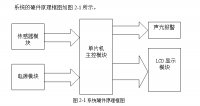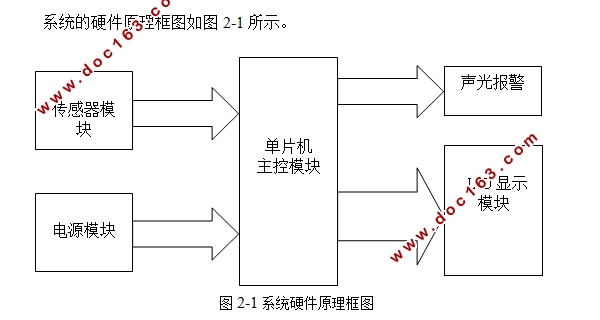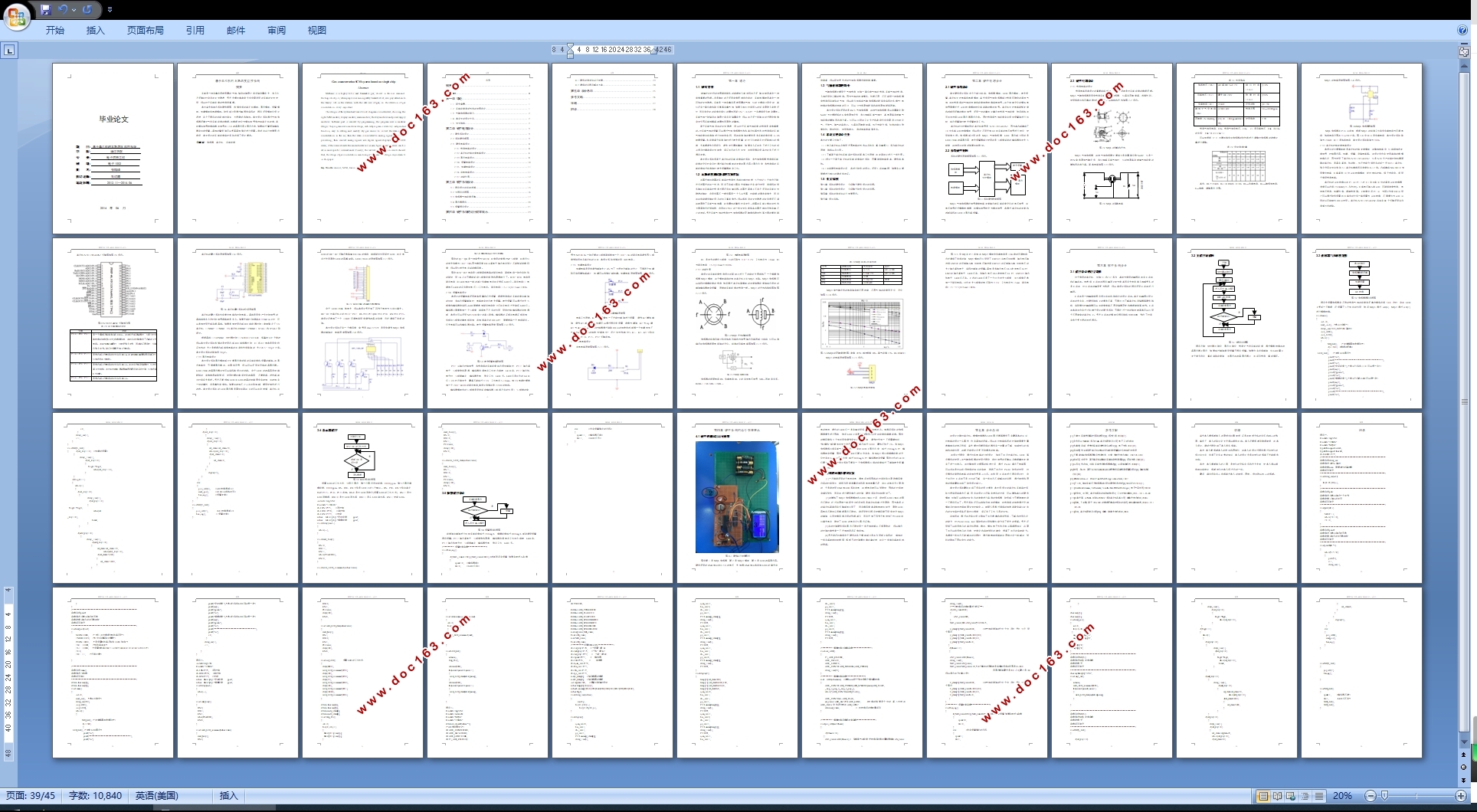基于单片机的瓦斯浓度监控系统设计

基于单片机的瓦斯浓度监控系统设计(任务书,开题报告,外文翻译,论文10000字)
摘要
瓦斯是一种有毒且易燃易爆的气体,储存在煤层之间且储存量巨大,当人们开采煤矿时会存在安全隐患,另外也要注意家庭生活中厨房用的瓦斯的安全使用,所以对于瓦斯浓度的检测很重要。
本文首先构造出系统硬件框图,选择合适的单片机模块、显示模块、报警模块、按键模块和电源模块。软件部分是通过编程来实现的,程序采用模块化设计思想,各个子程序的功能相对独立,方便调试和修改。本文设计系统通过气体传感器采集空气中瓦斯浓度的数据,将数据转化为模拟信号传送给单片机处理,再将模拟信号转换成数字信号在LCD液晶显示屏上显示出来,如果超过警报值蜂鸣器会自动报警。具体的警报值可以更具具体情况进行设置。测试与运行效果展示表明,本文设计的瓦斯浓度监控系统达到了设计要求。
关键词: 传感器 单片机 瓦斯浓度
Gas concentration SCM system based on single chip
Abstract
Methane is a highly toxic and flammable gas, stored in the coal seam and the huge stockpile, when people coal mining safety hazards exist, also pay attention to the family life in the kitchen with the safe use of gas, so the detection of gas concentration is very important.
[资料来源:Doc163.com]
The design of the system hard ware block diagram is constructed, choosing the right SCM module, display module, alarm module, the key modules and power supply modules. Software part is realized by programming, the program uses a modular design.The program uses a modular design, each subprogram is relatively independent function, easy to debug and modify. By gas sensor to collect the data of gas concentration in the air, then the data is converted to analog signal to the SCM processing, then convert analog signals into digital signals displayed on the LCD screen, if the value exceeds the alarm buzzer will alarm .Specific alarm values can be set in more specific circumstances. Finally, the last test and operation results showed that, the design of gas concentration monitoring system meets the design requirements in this paper.
Key Words: sensors; SCM; Gas concentration
[资料来源:http://doc163.com]



目录
摘要 I
Abstract II
第一章 绪论 1
1.1 研究背景 1
1.2 瓦斯浓度测试技术的发展状况 1
1.3 气敏传感器的简介 2
1.4 本论文的设计任务 2
1.5 全文结构 2 [资料来源:http://Doc163.com]
第二章 硬件电路设计 3
2.1硬件系统设计 3
2.2系统硬件框图 3
2.3 硬件电路设计 4
2.3.1检测电路的设计 4
2.3.2单片机控制处理电路设计 6
2.3.3显示电路设计 8
2.3.4 报警电路设计 10
2.3.5 按键电路设计 11
2.3.6供电电路设计 11
2.3.7功能扩展 12
第三章 软件系统设计 15
3.1程序设计的语言选择 15
3.2主程序流程图 16
3.3传感器气体浓度采集 17
3.4显示器程序 20
3.5报警程序设计 21
第四章 硬件系统的运行效果展示 23
4.1硬件的测试与运行效果 23
4.2遇到的问题及解决方案 24
第五章 设计总结 25
参考文献 26
[资料来源:www.doc163.com]
致谢 27
附录 28 [来源:http://Doc163.com]
